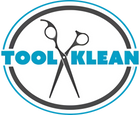The Science of Clean: How UVC Technology Is Revolutionizing Hygiene

In today’s world, cleanliness is more crucial than ever, and UVC technology is leading the charge in revolutionizing how we maintain hygiene. UVC lighting, a type of UV light with germicidal properties, harnesses the power of ultraviolet light to provide an effective solution for sanitizing environments without the need for harsh chemicals.
What Is UVC Technology?
UVC technology utilizes UV-C light, a spectrum of ultraviolet light with wavelengths ranging from 200 to 280 nanometers. This specific range, known as the UVC wavelength, is highly effective at breaking down the nucleic acids in bacteria and viruses, rendering them harmless. Unlike the visible light we see every day, UVC light operates at a much shorter wavelength, allowing it to penetrate and destroy the genetic material of pathogens.
How Does UVC Work?
At the heart of UVC technology are both fluorescent bulbs and light emitting diodes (LEDs) that emit UV-C radiation. This radiation disrupts the DNA and RNA of microorganisms—bacteria, viruses, and even mold—preventing them from replicating and causing disease. This process, known as UVC sanitation, is quick and efficient, making it ideal for a variety of settings.
Applications of UVC Sanitation
From water disinfection to air and surface disinfection, the applications of UVC technology are vast. In healthcare settings, UVC systems are used to disinfect air, ensuring a clean environment for both patients and staff. Similarly, in residential and commercial spaces, UVC devices can disinfect surfaces and the air, greatly reducing the risk of illness.
UVC lighting is particularly valuable because it can be used in different disinfection systems. These systems include standalone units for room sanitation or either fluorescent UV bulbs or UV C LEDs incorporated into existing fixtures to continuously cleanse environments like conference rooms, classrooms, and even public transport.
Safety Considerations
While UVC technology offers significant benefits in disinfection, it’s important to handle it with care. Direct exposure to UVC radiation can be harmful to both skin and eyes, which is why UVC devices often come with safety features such as delay timers and motion detectors to prevent exposure to humans and pets.
Why Choose UVC?
Choosing UVC technologies means opting for a method of disinfection that is not only effective but also environmentally friendly. Unlike traditional cleaning methods that involve sprays and chemicals, UVC disinfection leaves no residue and does not contribute to chemical runoff. It’s a clean method in every sense—no mess, no waste, just pure disinfection.
Furthermore, UV-C light technology is recognized for its efficiency. It can achieve up to 99.9% elimination of tough pathogens like staph and salmonella in just 15 to 30 minutes. For busy professionals—be they facility managers, teachers, or business owners—the ability to disinfect spaces quickly and effectively is invaluable.
The Future of UVC Technology
As we continue to seek out better ways to maintain cleanliness in public and private spaces, UVC technology stands out as a promising solution. With ongoing advancements in UV C radiation and light sources, the potential for even more effective and versatile disinfection systems is on the horizon.
The science of UVC technology is not just about keeping surfaces clean; it's about creating safer, healthier environments where we can thrive. It's a testament to the power of modern science and a key tool in our ongoing fight against the spread of infectious diseases.




Leave a comment